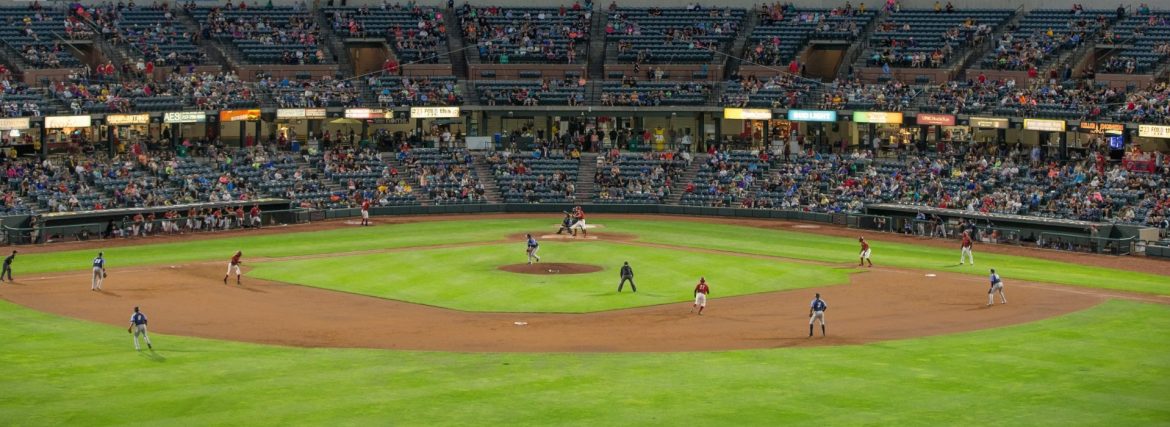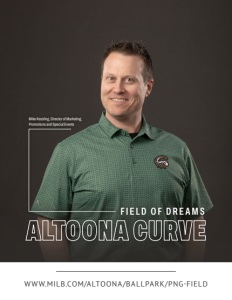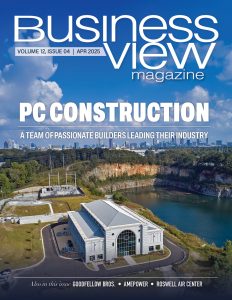Field of Dreams
Inside the diverse revenue strategies keeping minor league baseball thriving in America’s smallest AA market
At People’s Natural Gas Field in Altoona, Pennsylvania, home of the Altoona Curve, the vision extends far beyond the 69 annual baseball games. General Manager Nate Bowen, Assistant General Manager/Director of Merchandising Michelle Gravert, and Director of Marketing, Promotions and Special Events Mike Kessling have transformed the AA affiliate of the Pittsburgh Pirates into a year-round hub of activity.
“Going into the pandemic, we had already been on track to run more events at the stadium,” explains Bowen. “But because of not playing in 2020, we had to come up with other events since we are still an outdoor facility.” This pivot proved successful, with the stadium hosting 35 revenue-generating events outside of baseball games last year, plus numerous community activities like blood drives and charity walks.
The diversification strategy serves a dual purpose—creating additional revenue streams while keeping ticket prices affordable. “We don’t always want the answer to be we have to raise ticket prices or raise prices for sponsors, even though our costs are going up,” Bowen notes. “We try to be cognizant of our role within the community, and it’s another way for us to make incremental dollars while bringing other cool events to Altoona.”
These events also draw visitors from beyond the immediate area, boosting the local economy. “We’re drawing people from outside of Altoona, or even from further away for some of these unique events that will have them hopefully stay in hotels or restaurants in Altoona as well,” adds Bowen. This approach has become increasingly common among minor league stadiums nationwide, which face the challenge of maximizing facility usage during limited home game schedules.
Pirates Partnership and New Ownership
The Altoona Curve’s relationship with the Pittsburgh Pirates goes back to the team’s inception in 1999, creating a regional baseball pipeline that benefits both organizations. “Being just two hours away from Pittsburgh, we have a lot of fans that are obviously Pirates fans even before the Curve was in Altoona,” Bowen says. “The opportunity to see the players play here and then go on to the big stage and hopefully win in Pittsburgh is something that’s really special for our fans.”
This connection goes beyond casual fandom. The Curve boasts an active booster club that organizes annual spring training trips to Florida, where 60-80 dedicated fans spend a week watching Pirates games. “They typically take one or two road trips as well,” notes Bowen. “This past year they went to see the Pirates in Chicago, and they’ve also gone to Boston and New York to follow the Pirates around.”

Proximity also accelerates player development. “It’s a big advantage for them because their coaches or extra coordinators can just drive to Altoona rather than having to fly somewhere,” explains Bowen. This accessibility strengthens relationships between players and the community, with many former Curve players returning to Altoona for charity events years after their promotions.
In 2023, the team underwent a significant transition when Diamond Baseball Holdings purchased the franchise. Despite the ownership change, continuity remained the priority. “Our goal was for people coming to games not to really notice the difference at all,” Bowen reflects. “I think we’ve pretty much achieved that from the comments we’ve had from season ticket holders and partners.”
Evolution of Marketing and Community Impact
The Altoona Curve’s marketing strategies have undergone significant transformation since the pandemic, blending traditional approaches with digital innovation in a market that Kessling describes as “a stick in the mud when it comes to advertising.”
“Central Pennsylvania is one of the slowest markets in that decline in the country,” Kessling explains. “So, we still put a lot of effort into our traditional marketing. We have focused, obviously like the rest of society, more on digital channels.”
The team has pivoted toward motion graphics and video content over static images, capitalizing on changing consumption habits. “Video or motion graphics have really taken the forefront for any kind of advertising as far as interactions,” says Kessling. “The nice thing with digital is you can click through right to tickets for an event or for our games.”
Social media plays a crucial role in the marketing mix, with platform preferences heavily influenced by regional demographics. “In our market, Facebook is the king of what people pay attention to the most,” Kessling notes. “Our ad buys are generally heavily on Facebook, but we also utilize Instagram and X too.”
Beyond promoting games, the Curve has embraced its role as a community catalyst through special events that support local organizations. Their “Pint for Vets” beer, wine, and spirits show supported Band of Heroes Outdoors, an organization combating veteran suicide—particularly meaningful in a region with an unusually high veteran population.
“Central Pennsylvania is one of the densest veteran communities in the country, so our veterans are very important to us here,” Kessling says. Other initiatives include partnering with Abate for children’s programming and motorcycle safety education through a pickle festival, plus numerous walks and charity events utilizing the warning track.
Curve Merchandise
The merchandise strategy at People’s Natural Gas Field balances tradition with innovation, offering fans everything from essential baseball souvenirs to premium apparel. Gravert oversees this operation with careful attention to market preferences and price points.
“Our staples are always going to be our on-field caps, baseballs, bats, foam fingers, and some generic t-shirts,” Gravert explains. “Then we try to mix in some higher-end items like our polos and jackets, and sweatshirts.”
Planning for 2025 merchandise is already underway, though specific decisions remain in progress. “That is still a work in progress. We’re just getting catalogs from all our vendors for me to go through and figure out what’s new, are there new colors, and what I think is going to work for our market with the price points,” says Gravert.
Her approach emphasizes affordability and inventory management rather than high margins. “I don’t want to overprice something and have it sit there. I’d rather be able to sell it out and reorder throughout the season,” Gravert notes, reflecting the reality of merchandising in smaller markets where price sensitivity often exceeds that of major league venues.
Distribution includes the two team stores within the stadium and other outlets. “We currently have some of our stuff over at Lakemont for their Christmas event through a national deal. Lids and Dick’s both have hats and shirts and other merchandise,” adds Gravert. This multi-channel approach helps maintain brand visibility during the off-season.
Stadium Upgrades
People’s Natural Gas Field is in the final stages of a comprehensive renovation project that has transformed player facilities while setting the stage for future fan-focused improvements. “We are just about done after this fall with the renovation to the facility from the player’s point of view,” Bowen shares. “Prior to 2023, we redid the clubhouse, the training rooms downstairs, the weight room, and the kitchens downstairs as well.”
Recent improvements focused on safety and visibility. “This off-season we extended the netting down the foul lines to cover the picnic area in the bleachers down the first base side. So now anywhere you sit in foul territory is covered by the netting,” explains Bowen. This safety enhancement mirrors a league-wide trend of expanding protective netting to improve fan safety while maintaining visibility.
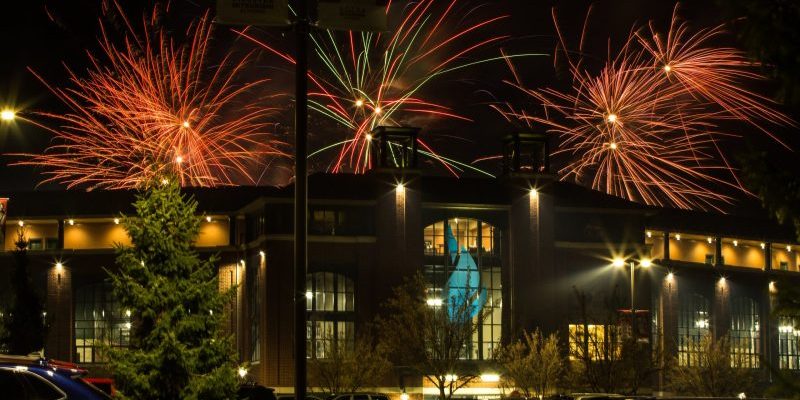
The renovations have been largely funded through Pennsylvania’s redevelopment assistance program. “The majority of it was funded that way,” notes Bowen. “It is a matching program in the state of Pennsylvania that is competitive, and you have to apply for and go through a process to be able to get selected to be approved to move forward with your projects.”
While new seating throughout the stadium remains a possibility after the 2025 season, Bowen indicates those plans are still being finalized. These upgrades come at a critical time, as Minor League Baseball has increased facility standards for affiliated teams following the 2021 reorganization, requiring many stadiums to modernize player and fan amenities to maintain their professional baseball affiliations.
Embracing Technology and Fan Experience
Digital transformation at People’s Natural Gas Field has accelerated dramatically since the pandemic, revolutionizing everything from ticketing to marketing analytics. “Before the pandemic we were probably 3%, maybe 4% or so using digital ticketing in 2019,” Bowen reveals. “We made an effort to switch that post-pandemic by texting or emailing tickets to fans.”
The shift to digital ticketing offers benefits beyond eliminating physical ticket costs. “The data gathering is what we’re going for,” explains Bowen. “We know if we give you a hard ticket, you’re not necessarily the person coming to the game, especially if you have season tickets. You’ll give those out to employees or customers or friends, and then we only have your information.”
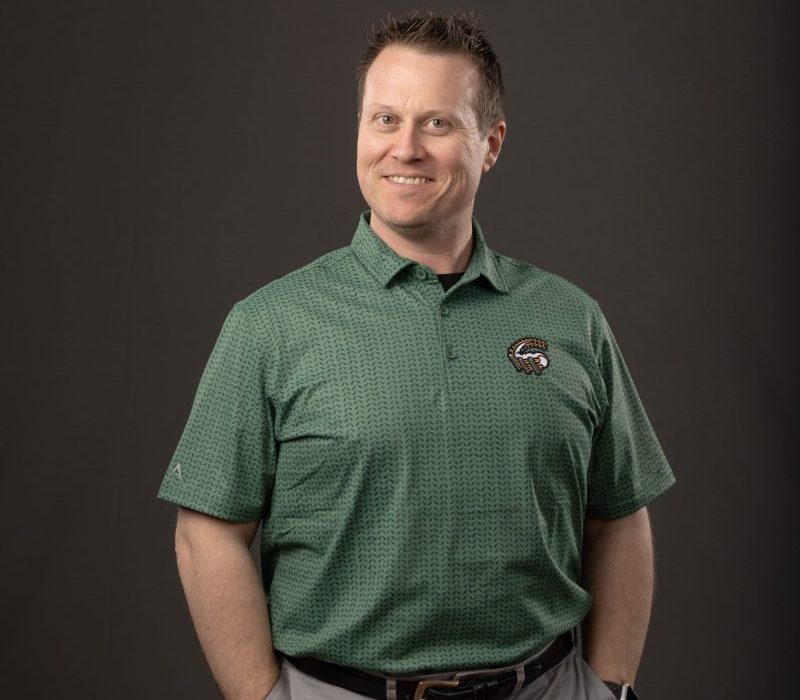
The team continues expanding this approach to group sales. “We are moving more into some different technology with Ticketmaster and Vivo to drive more of that business to be digital as well,” says Bowen. “Historically, especially pre-pandemic, you had access to whoever booked the group or maybe a couple of people that organized the group, but if you bring a hundred people, you’re only getting 1% of the information to be able to remarket back to those people.”
Mobile technology has also transformed in-venue operations. “We have extra handheld devices that we can use to speed up the checkout process for customers,” notes Bowen. “It gives you a handheld point of sale that you can move around and adjust more to where the lines are and where you need an extra person to be.”
Marketing analytics have similarly advanced. “In the last year or two, we’ve added some different ways with technology to be able to see where people are coming from when they come to our games,” Kessling adds. “We can go in and look to see where our fans are coming from, not just where they live, but where they’re going to stop before they come here.”
The People Behind the Game
Behind every successful sports venue are the individuals who make the magic happen—professionals who find fulfillment in creating memorable experiences for their community. For the Altoona Curve leadership team, these rewards come in different forms but share common themes of connection and impact.
“I would have to say the most rewarding aspect is the people,” Bowen reflects. “Whether it’s the people that come to games that you see all the time—we always talk about opening day being a family reunion for all the season ticket holders and partners who haven’t been able to be at the stadium for five or six months—but for me, it’s just as important for the people that work for you.”
Bowen takes pride in developing talent both on and off the field. “Most of the people in the front office, if we’re not the first job, we’re probably the second job a lot of them have had since whenever they graduated high school or college,” he says. “Seeing those people evolve year to year and then hopefully go on to take positions within our industry with other teams or even outside the industry” provides particular satisfaction.
For Kessling, joy comes from fan engagement. “I think it’s the fan experience. The entire team puts in a lot of effort to make our games and our events as fun as they possibly can,” he notes. “When you put in all these hours, you see the joy and the entertainment you bring people.”
Kessling shares an example of children making cards for veterans at a community event: “To know and see the kids having a great time seeing the mascot and getting their photo, and then knowing those cards with messages like ‘thank you for your service’ are going to veterans—it’s being able to bring joy to our entire community and doing it as a team effort.”
Gravert’s leadership philosophy exemplifies the team’s attitude. “I’m never going to ask you to do something that I’m not willing to do myself,” she says. “If I’m not willing to do it, then there’s probably a reason why we shouldn’t be doing it.”
As the Altoona Curve prepares for 2025, this dedicated team continues balancing baseball tradition with innovation—proving that even in America’s smallest AA market, passion and community connection create an outsized impact.
AT A GLANCE
Who: Altoona Curve
What: AA affiliate of the Pittsburgh Pirates and multi-purpose stadium venue
Where: People’s Natural Gas Field, Altoona, Pennsylvania
Website:
www.milb.com/altoona/ballpark/png-field
PREFERRED VENDORS/PARTNERS

Breezeline is the eighth-largest cable operator in the United States. The company provides its residential and business customers with Internet, TV, and Phone services in Pennsylvania and 12 other states. Breezeline is a subsidiary of Cogeco Communications (TSX: CCA), which also operates in Canada as Cogeco Connexion.
Breezeline: www.montanaconnectionspark.com
